Multi-isotope studies investigating recharge and inter-aquifer connectivity in coal seam gas areas (Qld, NSW) and shale gas areas (NT)
Axel Suckow A G , Alec Deslandes A , Christoph Gerber A , Sebastien Lamontagne A , Dirk Mallants A , Philip Davies A , Andrew Taylor A , Cornelia Wilske A , Stan Smith A , Matthias Raiber B , Karina Meredith C , Praveen Kumar Rachakonda D , Alf Larcher D , Paul Wilkes D , Henning Prommer E , Adam Siade E and Damian Barrett FA CSIRO Land and Water, Gate 5, Waite Road, Urrbrae, SA 5064, Australia.
B CSIRO Land and Water, 41 Boggo Road, Dutton Park, Qld 4102, Australia.
C ANSTO, New Illawarra Road, Lucas Heights, NSW 2234, Australia.
D CSIRO Energy, 26 Dick Perry Avenue, Kensington, WA 6151, Australia.
E The University of Western Australia, 35 Stirling Highway, Perth, WA 6009, Australia.
F CSIRO Energy, 2-40 Clunies Ross Street, Acton, ACT 2601, Australia.
G Corresponding author. Email: axel.suckow@csiro.au
The APPEA Journal 60(1) 335-347 https://doi.org/10.1071/AJ19187
Submitted: 6 December 2019 Accepted: 3 February 2020 Published: 15 May 2020
Abstract
Large sedimentary basins with multiple aquifer systems like the Great Artesian Basin and the Beetaloo Sub-Basin are associated with large time and spatial scales for regional groundwater flow and mixing effects from inter-aquifer exchange. This makes them difficult to study using traditional hydrogeological investigation techniques. In continental onshore Australia, such sedimentary aquifer systems can also be important freshwater resources. These resources have become increasingly stressed because of growing demand and use of groundwater by multiple industries (e.g. stock, irrigation, mining, oil and gas). The social licence to operate for extractive oil and gas industries increasingly requires robust and reliable scientific evidence on the degree to which the target formations are vertically and laterally hydraulically separated from the aquifers supplying fresh water for stock and agricultural use. The complexity of such groundwater interactions can only be interpreted by applying multiple lines of evidence including environmental isotopes, hydrochemistry, hydrogeological and geophysical observations. We present an overview of multi-tracer studies from coal seam gas areas (Queensland and New South Wales) or areas targeted for shale gas development (Northern Territory). The focus was to investigate recharge to surficial karst and deep confined aquifer systems before industrial extraction on time scales of decades up to one million years and aquifer inter-connectivity at the formation scale. A systematic and consistent methodology is applied for the different case study areas aimed at building robust conceptual hydrogeological models that inform groundwater management and groundwater modelling. The tracer studies provided (i) in all areas increased confidence around recharge estimates, (ii) evidence for a dual-porosity flow system in the Hutton Sandstone (Queensland) and (iii) new insights into the connectivity, or lack thereof, of flow systems.
Keywords: aquifer inter-connectivity, aquitard transmissivity, environmental tracers, groundwater recharge, karst aquifers, multiple lines of evidence.

Dr Axel Suckow is a Senior Research Scientist at CSIRO and manages the environmental tracer laboratory at Waite Campus, the only facility in the southern hemisphere to measure all noble gases in water samples. Axel has a Degree in Environmental Physics from Heidelberg University and more than 30 years of experience in geochronology and isotope hydrology and in managing laboratories for environmental tracer and geochronology studies. Axel spent seven years at the International Atomic Energy Agency to build their noble gas facility and there also edited the standard guidebook on dating old groundwater. Of the roughly one-dozen noble gas facilities for water samples in the world he studied nine and built two. |
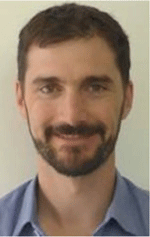
Dr Alec Deslandes is a Research Technician in the Environmental Tracers Laboratory, CSIRO Land and Water. Alec completed a PhD in Physics at Flinders University, and before joining CSIRO undertook post-doctoral fellowships at the Australian Nuclear Science and Technology Organisation. |

Dr Christoph Gerber is a Senior Experimental Scientist in the Environmental Tracers and Applications Team at CSIRO Land and Water, where he uses environmental tracers to improve conceptual models of aquifers. Prior to joining CSIRO, he completed a PhD in Environmental Physics where he used radioactive isotopes of noble gases to date groundwater on three continents and on timescales from weeks to hundreds of thousands of years. |
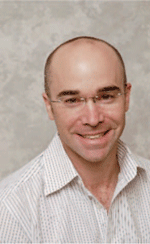
Dr Sebastien Lamontagne is Principal Research Scientist in the Environmental Tracers and Applications team of CSIRO Land and Water. He uses tracer techniques to evaluate groundwater–surface water interactions in streams, coastal waters and legacy sites. |
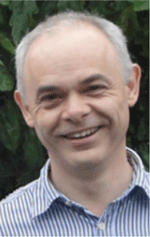
Dr Dirk Mallants is Senior Principal Research Scientist, leading the Environmental Tracers and Applications team of CSIRO Land and Water. He has a background in soil and groundwater hydrology with more than 25 years of experience in characterising and modelling water flow and contaminant transport in complex environments – typically variably-saturated soils, aquifers and low-permeable porous media including deep clay formations. |
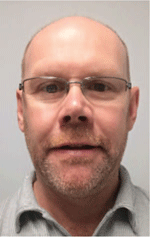
Mr. Philip Davies is a Senior Experimental Scientist in the Regional Scale Groundwater Analysis team at CSIRO Land and Water. Philip has more than 20 years of experience in the field of spatial information science, with a range of expertise in research topics including spatial modelling of regional hydrology, spatially quantifying total recharge/salt accession to the water table, terrain analysis modelling and use of remote sensing for soil moisture determination. |
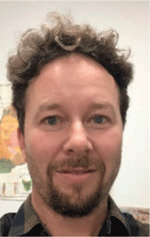
Mr Andrew Taylor is Senior Experimental Scientist in Hydrogeology in the Environmental Tracers and Applications team of CSIRO Land and Water. Andrew has a background in soil and groundwater hydrology with 14 years of experience in field and desktop evaluation of hydrogeological systems throughout Australia. He received a Bachelor of Environmental Science at Flinders University in 2002 and before working at CSIRO he worked in vadose zone hydrology at the Soil Physics Laboratory in Adelaide University. In recent years, Andrew has focused on developing innovative sampling techniques to apply environmental tracers to characterise regional hydrogeological systems throughout Australia. Andrew currently leads the groundwater hydrology components of some of CSIRO’s major research initiatives, the Northern Australia Water Resource Assessment (NAWRA) and the Norfolk Island Water Resource Assessment (NIWRA). |

Dr Cornelia Wilske is a hydrogeologist with ten years of experience in the application of multiple environmental tracers in semi-arid to arid areas. She did her PhD at the Technical University Bergakademie Freiberg in 2019 and has a strong background in geology and particularly hydrogeology and hydrochemistry. During her PhD, she worked in multi-cultural and politically sensitive areas such as Israel and Palestine. |
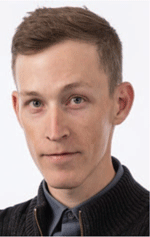
Stan Smith is a Hydrogeologist at Stantec Consulting Services, based in Salt Lake City, Utah. He received his MSc and BSc from the University of Utah. Stan contributes to mining and environmental projects with focus on waste rock seepage and pit lake geochemistry modelling. Prior to working in consulting, Stan worked for CSIRO Land and Water during 2012–2016 performing noble gas research and laboratory development. Stan is a licensed professional geologist in the state of Utah. |
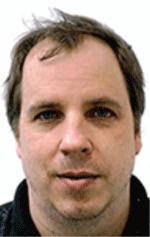
Dr Matthias Raiber is a Senior Research Scientist at CSIRO Land and Water, based in Brisbane. He received his PhD from La Trobe University in Melbourne in 2010. Dr Raiber’s research interests focus on geology, hydrogeology and, in particular, the development of 3D geological models and the characterisation of hydrodynamics of sedimentary basins and overlying alluvial aquifers and surface water systems using hydrochemistry and environmental tracers. Before joining CSIRO in 2013, Dr Raiber completed a post-doctoral research fellowship with the National Centre for Groundwater Research and Training and the Queensland University of Technology and worked at GNS Science in New Zealand as an Isotope Hydrologist for two years. |
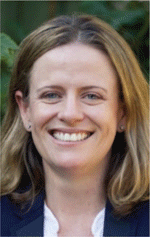
Dr Karina Meredith is a Senior Research Scientist at the Australian Nuclear Science and Technology Organisation with expertise in hydrochemistry, hydrogeology and isotope geochemistry and is an Adjunct Senior Lecturer at the University of New South Wales, Australia. Her research interests lie in applying a variety of stable and cosmogenic isotopic tracers to investigate water resource suitability and sustainability. She has undertaken various catchment scale studies over the past 19 years in locations throughout Australia and internationally. These projects include tracing the evolution of carbon and various trace elements and their isotopes in coastal and arid zone systems. |
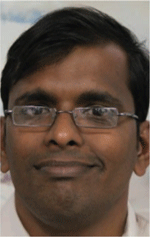
Dr Praveen Kumar Rachakonda is Research Engineer (Hydrogeologist and Modeller) at CSIRO Energy. Praveen received his PhD from Indian Institute of Technology, Madras, India in 2008. Praveen has been involved with the groundwater stream in the environmental monitoring program of the National Geosequestration Laboratory (a joint CSIRO, UWA and Curtin University venture). Praveen is a member of Engineers Australia and the International Association of Hydrogeologists. |
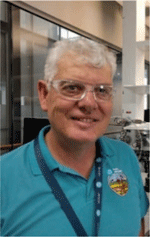
Dr Alf Larcher has a PhD in Organic Geochemistry and is a Research Technician at CSIRO’s National Geosequestration Laboratory (NGL) in Perth WA. He has expertise in organic and inorganic analysis using inductively coupled plasma, ion chromatography, gas chromatography and mass spectrometry. Alf has had wide experience in oil, gas and fuels in both research, industrial and commercial environments. |
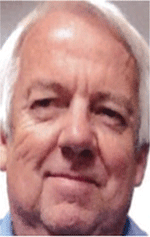
Dr Paul Wilkes is Senior Research Scientist, Geosciences at CSIRO Energy. Paul is an experienced geophysicist who has worked in energy projects around the world, including nuclear power projects in the United Kingdom, oil and gas, geothermal and shale gas. Many of these projects involved studying impacts on water. Paul has worked in the private sector in the UK and Australia. His Australian public sector work includes seven years at Geoscience Australia, more than 18 years at Curtin University and 10 years at CSIRO. Paul has also been involved in magnetic and gravity research and applications. He has designed, processed and interpreted aeromagnetic surveys in many different countries. |
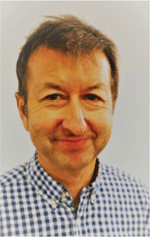
Dr Henning Prommer is a Winthrop Research Professor at the University of Western Australia (UWA) and a Principal Research Scientist and Team Leader in the Environmental Contaminant Mitigation and Technologies Program at CSIRO Land and Water. His main expertise and research interests are (i) the development and application of reactive transport models to water quality issues in porous media, in particular the quantification of redox processes and the associated fate of organic and inorganic pollutants at both the laboratory- and field-scale, (ii) understanding and quantifying coupled transport and (bio)geochemical processes induced by managed aquifer recharge techniques such as aquifer storage and recovery and (iii) numerical modelling of spatial and temporal variations of isotope signatures and environmental tracers in natural and contaminated aquifers. |

Dr Adam Siade is a Research Fellow with UWA, and also holds a visitor agreement with CSIRO Land and Water based in Floreat, WA. Adam received his PhD from the University of California, Los Angeles in 2012. Dr Siade’s research interests include numerical groundwater flow and transport modelling, along with the calibration, uncertainty quantification and management optimisation analyses associated with such models. Before joining UWA, Adam held a Hydrologist position with the USA Geological Survey. |

Dr Damian Barrett is Research Director of the Onshore Gas Program in CSIRO’s Energy Business Unit and Director of the Gas Industry Social and Environmental Research Alliance (GISERA), which is a collaboration between CSIRO, Commonwealth and state governments and industry established to undertake publicly-reported independent research. He is also an Adjunct Professor in the Sustainable Minerals Institute, University of Queensland. Dr Barrett has more than 25 years of research experience in the CSIRO, Cooperative Research Centre (CRC) for Greenhouse Accounting, eWater CRC and the University of Queensland. He graduated with a PhD from the Australian National University in 1993. In 1995, he was a Carnegie-Melon Foundation Visiting Research Fellow at the Smithsonian Institution, USA, where he investigated impacts of rising atmospheric CO2 concentrations on plant root physiology of nutrient acquisition. In 2008 he was appointed Professorial Research Fellow at the Sustainable Minerals Institute, University of Queensland, and was Director of the Centre for Water in the Minerals Industry between 2009 and 2012. |
References
Clark, I. D., and Fritz, P. (1997). ‘Environmental Isotopes in Hydrogeology.’ (Springer Verlag: Berlin, Heidelberg, New York.)Cook, P. G., and Herczeg, A. L. (Eds) (2000). ‘Environmental Tracers in Subsurface Hydrology.’ (Kluwer Academic Press: Boston, MA.)
Deslandes, A., Gerber, C., Lamontagne, S., Wilske, C., and Suckow, A. (2019). ‘Environmental Tracers in the Beetaloo Basin. Aquifer and Groundwater Characterization.’ CSIRO, Adelaide, Australia.
Frenzel, H., Kessels, W., Lengnick, M., Suckow, A., and Geyh, M. A. (1997a). Kalibrierung eines numerischen Grundwasserströmungsmodells für das Testgebiet Golpa-N/Gröbern durch Vergleich von Bahnlinienlaufzeiten mit 14C-Grundwasseraltern. No. Archiv-Nr. 116, 2934. Hannover.
Frenzel, H., Kessels, W., Lengnick, M., Suckow, A., and Geyh, M. A. (1997b). Numerische Modellierung des Grundwasseralters mit dem Bahnlinienverfahren für das Modellgebiet Golpa-N/Gröbern und Vergleich mit Isotopendaten. Paper presented at the 3. GBL Kolloquium, Halle/Saale, 19–21. Februar 1997. (Ed. Ad GBL-Gemeinschaftsvorhabens) Volume 4, pp. 168–174. (E. Schweizerbart: Stuttgart.)
Fulton, S., and Knapton, A. (2015). Beetaloo Basin hydrogeological assessment. Available at https://frackinginquiry.nt.gov.au/?a=410609 [verified 11 February 2020]
Gardner, W. P., Harrington, G. A., and Smerdon, B. D. (2012). Using excess 4He to quantify variability in aquitard leakage. Journal of Hydrology 468–469, 63–75.
| Using excess 4He to quantify variability in aquitard leakage.Crossref | GoogleScholarGoogle Scholar |
Harrington, G. A., Gardner, W. P., Smerdon, B. D., and Hendry, M. J. (2013). Palaeohydrogeological insights from natural tracer profiles in aquitard porewater, Great Artesian Basin, Australia. Water Resources Research 49, 4054–4070.
| Palaeohydrogeological insights from natural tracer profiles in aquitard porewater, Great Artesian Basin, Australia.Crossref | GoogleScholarGoogle Scholar |
Heaton, T. H. E., and Vogel, J. C. (1981). “Excess air” in groundwater. Journal of Hydrology 50, 201–216.
| “Excess air” in groundwater.Crossref | GoogleScholarGoogle Scholar |
Hendry, M., and Wassenaar, L. (2011). Millennial-scale diffusive migration of solutes in thick clay-rich aquitards: evidence from multiple environmental tracers. Hydrogeology Journal 19, 259–270.
| Millennial-scale diffusive migration of solutes in thick clay-rich aquitards: evidence from multiple environmental tracers.Crossref | GoogleScholarGoogle Scholar |
Hodgkinson, J., Hortle, A., and McKillop, M. (2010). The application of hydrodynamic analysis in the assessment of regional aquifers for carbon geostorage: preliminary results for the Surat Basin, Queensland. The APPEA Journal 50, 445–462.
| The application of hydrodynamic analysis in the assessment of regional aquifers for carbon geostorage: preliminary results for the Surat Basin, Queensland.Crossref | GoogleScholarGoogle Scholar |
IAEA (2013). ‘Isotope Methods for Dating Old Groundwater.’ (Eds A. Suckow, P. K. Aggarwal, and L. J. Araguas-Araguas). (International Atomic Energy Agency: Vienna.) Available at https://www-pub.iaea.org/MTCD/Publications/PDF/Pub1587_web.pdf [verified 11 February 2020]
Iverach, C. P., Cendón, D. I., Meredith, K. T., Wilcken, K. M., Hankin, S. I., Andersen, M. S., and Kelly, B. F. J. (2017). A multi-tracer approach to constraining artesian groundwater discharge into an alluvial aquifer. Hydrology and Earth System Sciences 21, 5953–5969.
| A multi-tracer approach to constraining artesian groundwater discharge into an alluvial aquifer.Crossref | GoogleScholarGoogle Scholar |
Kazemi, G. A., Lehr, J. H., and Perrochet, P. (2006). ‘Groundwater Age.’ (John Wiley: Hoboken, NJ, USA.)
Kendall, C., and McDonnell, J. J. (1998). ‘Isotope Tracers in Catchment Hydrology.’ (Elsevier: Amsterdam.)
Lamontagne, S., Taylor, A. R., Batlle-Aguilar, J., Suckow, A., Cook, P. G., Smith, S. D., Morgenstern, U., and Stewart, M. K. (2015). River infiltration to a subtropical alluvial aquifer inferred using multiple environmental tracers. Water Resources Research 51, 4532–4549.
| River infiltration to a subtropical alluvial aquifer inferred using multiple environmental tracers.Crossref | GoogleScholarGoogle Scholar |
Lehmann, B. E., Waber, H. N., Tolstikhin, I., Kamensky, I., Gannibal, M., Kalashnikov, E., and Pevzner, B. (2003). Helium in solubility equilibrium with quartz and porefluids in rocks: A new approach in hydrology. Geophysical Research Letters 30, 1128.
| Helium in solubility equilibrium with quartz and porefluids in rocks: A new approach in hydrology.Crossref | GoogleScholarGoogle Scholar |
OGIA (2016). Underground water impact report for the Surat Cumulative Management Area. Available at https://www.dnrme.qld.gov.au/__data/assets/pdf_file/0007/345616/uwir-surat-basin-2016.pdf [verified 11 February 2020]
OGIA (2019). Underground water impact report for the Surat Cumulative Management Area. Available at https://www.dnrme.qld.gov.au/__data/assets/pdf_file/0019/1461241/uwir-full-report.pdf [verified 11 February 2020]
Osenbrück, K., Lippmann, J., and Sonntag, C. (1998). Dating very old pore waters in impermeable rocks by noble gas isotopes. Geochimica et Cosmochimica Acta 62, 3041–3045.
| Dating very old pore waters in impermeable rocks by noble gas isotopes.Crossref | GoogleScholarGoogle Scholar |
Raiber, M., and Suckow, A. (2018). Hydrochemistry of the Pilliga Sandstone aquifer in NSW – data availability, preliminary assessment of spatial patterns and conceptual model uncertainties. CSIRO, Australia.
Ransley, T. R., Radke, B. M., Feitz, A. J., Kellett, J. R., Owens, R., Bell, J., Stewart, G., and Carey, H. (2015). Hydrogeological Atlas of the Great Artesian Basin. 1 ed. Scale 1:10000000. Geoscience Australia: Canberra. Available at http://dx.doi.org/10.11636/9781925124668 [verified 11 February 2020]
Salmon, S. U., Prommer, H., Park, J., Meredith, K. T., Turner, J. V., and McCallum, J. L. (2015). A general reactive transport modeling framework for simulating and interpreting groundwater 14C age and δ13C. Water Resources Research 51, 359–376.
| A general reactive transport modeling framework for simulating and interpreting groundwater 14C age and δ13C.Crossref | GoogleScholarGoogle Scholar |
Sanford, W. E., and Buapeng, S. (1996). Assessment of a groundwater flow model of the Bangkok Basin, Thailand, using carbon-14-based ages and paleohydrology. Hydrogeology Journal 4, 26–40.
| Assessment of a groundwater flow model of the Bangkok Basin, Thailand, using carbon-14-based ages and paleohydrology.Crossref | GoogleScholarGoogle Scholar |
Siade, A., Prommer, H., Suckow, A., and Raiber, M. (2018). Using numerical groundwater modelling to constrain flow rates and flow paths in the Surat Basin through environmental tracer data. Final Report. CSIRO, Australia. Available at https://gisera.csiro.au/wp-content/uploads/2018/08/Water-6-Final-Report.pdf [verified 11 February 2020]
Smith, S. D. (2015). Geochemical baseline monitoring: quartz-helium trial. Final Report. CSIRO, Australia. Available at https://gisera.csiro.au/wp-content/uploads/2018/03/Water-4-Final-Report-2015.pdf [verified 11 February 2020]
Smith, S. D., Solomon, D. K., and Gardner, P. W. (2013). Testing helium equilibrium between quartz and pore water as a method to determine pore water helium concentrations. Applied Geochemistry 35, 187–195.
| Testing helium equilibrium between quartz and pore water as a method to determine pore water helium concentrations.Crossref | GoogleScholarGoogle Scholar |
Smith, S. D., Mathouchanh, E., and Mallants, D. (2016). Characterisation of fluid flow in aquitards using helium concentrations in quartz, Gunnedah Basin, NSW. CSIRO, Australia. Available at https://www.environment.gov.au/system/files/resources/bd2f887c-c5a2-4ca0-b3ec-58d25529462a/files/characterisation-of-fluid-flow-aquitards-using-helium.pdf [verified 11 February 2020]
Smith, S. D., Mathouchanh, E., and Mallants, D. (2019). Quartz-helium method to estimate fluid flow in thick aquitards, Gunnedah Basin, Australia. Ground Water 57, 153–165.
| Quartz-helium method to estimate fluid flow in thick aquitards, Gunnedah Basin, Australia.Crossref | GoogleScholarGoogle Scholar | 29573410PubMed |
Sreekanth, J., and Moore, C. (2015). CSG water reinjection impacts: modelling, uncertainty and risk analysis; groundwater flow and transport modelling and uncertainty analysis to quantify the water quantity and quality impacts of a coal seam gas produced water reinjection scheme in the Surat Basin, Queensland. CSIRO, Australia. Available at https://www.aph.gov.au/DocumentStore.ashx?id=5739000e-26d9-4986-a970-0e47850f3083&subId=410955 [verified 11 February 2020]
Stute, M., and Schlosser, P. (1993). Principles and applications of the noble gas paleothermometer. In ‘Climate Change in Continental Isotopic Records, Geophysical Monograph, Vol. 78.’ (Eds P. K. Swart, K. C. Lohmann, J. McKenzie, and S. Svin.) pp. 89–100 (American Geophysical Union: Washington, DC.)
Suckow, A. (2014). The age of groundwater - Definitions, models and why we do not need this term. Applied Geochemistry 50, 222–230.
| The age of groundwater - Definitions, models and why we do not need this term.Crossref | GoogleScholarGoogle Scholar |
Suckow, A., Taylor, A. R., Davies, P., and Leaney, F. W. (2016). Geochemical baseline monitoring. Final Report. CSIRO: Australia. Available at https://gisera.csiro.au/wp-content/uploads/2018/03/Water-4-Final-Report-2016.pdf [verified 11 February 2020]
Suckow, A., Deslandes, A., Gerber, C., and Lamontagne, S. (2018a). Environmental tracers in the Beetaloo Sub-Basin. Historical data and a first reconnaissance study of eight samples. CSIRO,Adelaide, Australia.
Suckow, A., Raiber, M., Deslandes, A., and Gerber, C. (2018b). Constraining conceptual groundwater models for the Hutton and Precipice aquifers in the Surat Basin through tracer data. Final Report. CSIRO, Australia. Available at https://gisera.csiro.au/wp-content/uploads/2018/03/Water-6-Milestone-2-Report-1.pdf [verified 11 February 2020]
Suckow, A., Deslandes, A., Raiber, M., Taylor, A. R., Davies, P., Gerber, C., and Leaney, F. (2020). Reconciling contradictory environmental tracer ages in multi-tracer studies to characterize the aquifer and quantify deep groundwater flow: an example from the Hutton Sandstone, Great Artesian Basin, Australia. Hydrogeology Journal 28, 75–87.
| Reconciling contradictory environmental tracer ages in multi-tracer studies to characterize the aquifer and quantify deep groundwater flow: an example from the Hutton Sandstone, Great Artesian Basin, Australia.Crossref | GoogleScholarGoogle Scholar |
Sudicky, E. A., and Frind, E. O. (1981). Carbon 14 dating of groundwater in confined aquifers: Implications of aquitard diffusion. Water Resources Research 17, 1060–1064.
| Carbon 14 dating of groundwater in confined aquifers: Implications of aquitard diffusion.Crossref | GoogleScholarGoogle Scholar |
Taylor, A. R., Harrington, G. A., Clohessy, S., Dawes, W. R., Crosbie, R. S., Doble, R. C., Wohling, D. L., Batlle-Aguilar, J., Davies, P. J., Thomas, M., and Suckow, A. (2018). Hydrogeological assessment of the Grant Group and Poole Sandstone - Fitzroy Catchment, Western Australia. A Technical Report to the Australian Government from the CSIRO Northern Australia Water Resource Assessment, Part of the National Water Infrastructure Development Fund: Water Resource Assessments. (ISBN 978–1-4863–1054–8 (paperback), ISBN 978–1-4863–1055–5 (PDF)). Available at https://publications.csiro.au/rpr/download?pid=csiro:EP183648&dsid=DS6 [verified 11 February 2020]
Tickell, S. J. (2004). Carbon dating of groundwaters in the Oolloo Dolostone Aquifer. Available at https://www.territorystories.nt.gov.au/jspui/bitstream/10070/229203/1/WRD04021.pdf [verified 11 February 2020]
Tickell, S. J. (2005). Groundwater resources of the Tindall Limestone. Available at http://ntl.communitystories.net/jspui/bitstream/10070/241885/1/Groundwater_Resources_of_the_Tindall_Limestone.pdf [verified 11 February 2020]
Tickell, S. J. (2016). Stable isotopes and carbon dating of groundwaters in the Tindall aquifer (Technical Report No. 12/2016D). Available at http://www.territorystories.nt.gov.au/jspui/bitstream/10070/265589/1/Stable%20isotopes%20and%20carbon%20dating%20of%20groundwaters%20in%20the%20Tindall%20aquifer.pdf [verified 11 February 2020]
Tickell, S. J., and Bruwer, Q. (2017). Georgina Basin groundwater assessment: Daly Waters to Tennant Creek. Available at https://www.territorystories.nt.gov.au/jspui/bitstream/10070/304921/9/Georgina%20Basin%20Groundwater%20Assessment%20-%20Daly%20Waters%20to%20Tenant%20Creek.pdf [verified 11 February 2020]
Tolstikhin, I., Gannibal, M., Tarakanov, S., Pevzner, B., Lehmann, B., Ihly, B., and Waber, H. N. (2005). Helium transfer from water into quartz crystals: a new approach for porewater dating. Earth and Planetary Science Letters 238, 31–41.
| Helium transfer from water into quartz crystals: a new approach for porewater dating.Crossref | GoogleScholarGoogle Scholar |


